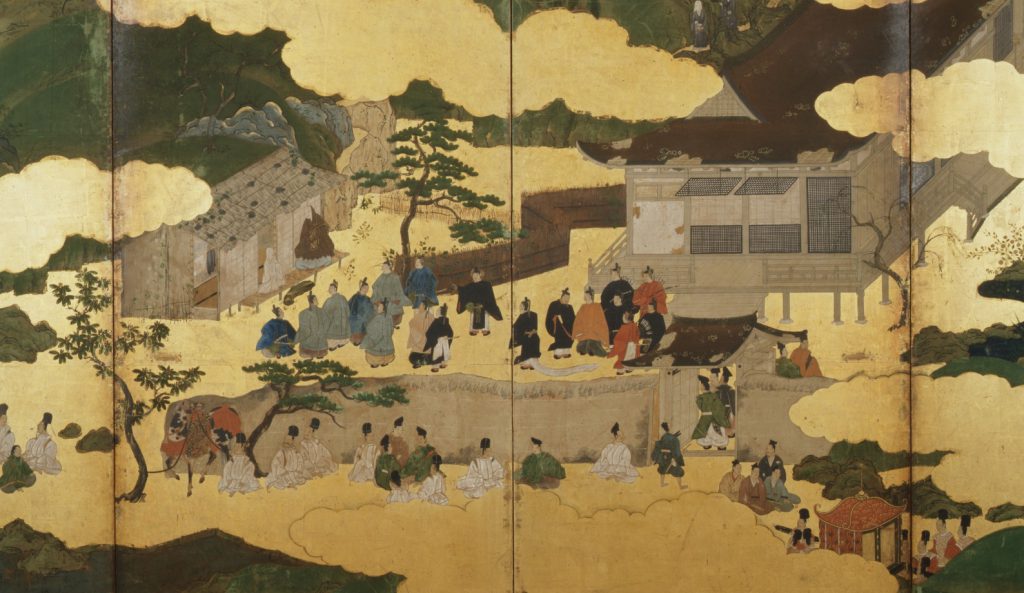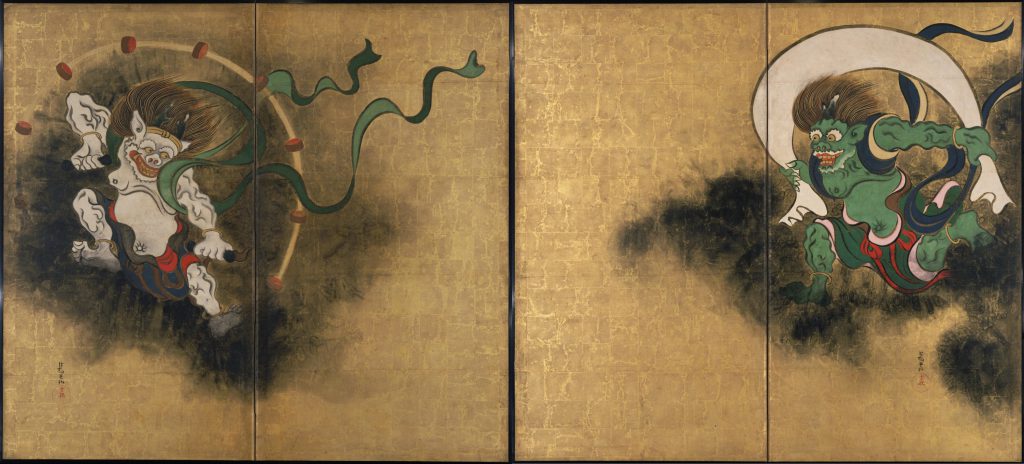Art of the People Exploded from the 17th to the 19th Century
In cultural and art history, the Edo period generally refers to the period from 1615, when the Toyotomi clan fell, to 1867, when the Edo shogunate’s system virtually collapsed.
Compared to the previous Sengoku period and Azuchi-Momoyama period, which lasted 30 years from the time when lords of various regions fought to expand their territories to the time of the unification by Toyotomi Hideyoshi, the Tokugawa shogunate lasted about two centuries and its policy of civilian rule and national isolation (Sakoku) brought an extremely peaceful society and a long period of prosperity in the various fields of art.
The Azuchi-Momoyama period was characterized by the use of the authority of their own power. A large amount of gold and silver led to the creation of many fascinating and luxurious works of art adorned with gold and silver. Nobuo Tsuji, a leading authority on Japanese art, defines this period as the age of “Kazari” (decoration).
According to Tsuji, the subsequent Edo period art can be seen as “a process in which the realistic and secular aspects of Momoyama art were inherited and strengthened on a more popular level”. Instead of the ruling classes, such as court nobles and samurai, who had been the main producers of art, the urban townspeople, who were the ruled classes, exercised their creativity in their daily lives and achieved the popularization of art”. This is the most distinctive feature of Edo period art.
“Looking around the world, there is probably no other example of city dwellers, who were placed in a position unrelated to political power and forbidden to travel abroad, cultivating such a high level of art in the places where they lived.” Tsuji writes.

The painter Hasegawa Kyuzo is a son of Hasegawa Tohaku, and he painted the mist with actual gold. Hasegawa Kyuzo “The Imperial Visit to Ohara(大原御幸図屏風)” (16th century/from Colbase[https://colbase.nich.go.jp/])
A similar phenomenon occurred during the Heian period.
In fact, there was a period during the Heian Period (794-1192), several hundred years before the Edo Period, when Japan cut off trade with the continent. During the middle to late Heian period (794-1192c.a.), trade with China and Korea, which had continued for several hundred years, was interrupted. This allowed Japan to get out from under the influence of continental culture and establish its own unique culture (Kokufu bunka), and a Japanization was accomplished, centering on court culture and women, such as the “Tale of Genji”.
The Edo period (1603-1867) was a time when imports of foreign artifacts were restricted under the strict isolation control of the country. Although we can see similarities between the Edo period and Heian period, in contrast to the development of the latter mainly by aristocrats, Edo period art was developed by citizens and could be described as a “civic version” of the Heian period’s kokufu culture.
On the other hand, people were not indifferent to foreign cultures, and in fact, the strict national isolation policy stimulated their interest in foreign countries. According to Tsuji, the information on Chinese and European art that came from Nagasaki, the only trading post in Japan, “was received with a great interest, even if it was only in fragments, and its impact on the various fields of art was greater than one can imagine.”

People gathering in front of the Yoshiwara Yukaku. Torii Kiyotada I “The Main Gate, New Yoshiwara” (1740–1750/from the Art Institute Chicago)
Evolution to a More Sophisticated Art
The development of Edo period art over the course of two and a half centuries can be roughly divided into the early and late periods, beginning with the Kyoho period (1716~36). The first period was “a period in which the fever of Kazari art that exploded in the Momoyama period subsided within the framework of the Tokugawa shogunate and domain system and evolved into a more sophisticated art” (Tsuji).
Among these, the art of Ogata Korin (1658-1716), who revolutionized the old style of Japanese painting and achieved a bold, ornate, and decorative style of painting at large, is representative of the art culture of that period.

Ogata Korin “Wind God and Thunder God(風神雷神図屏風)” (18th century/from Colbase[https://colbase.nich.go.jp/])
In the latter period, the importation of Western books, which was lifted following the Kyoho reforms by Tokugawa Yoshimune, the eighth Tokugawa shogun, and contact with new styles, such as Bun-jin-Ga (literati paintings) by intellectuals in China, created a momentum for innovation in the arts. Eventually, a wide range of people, including townspeople and farmers, began to participate in the art world, and the character of Edo art as the art of the common people became more apparent.
While reflecting the maturity and decadence of urban culture, the art of the Edo period also strengthened its orientation toward empiricism and rationalism and then entered the modern age.

